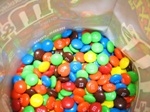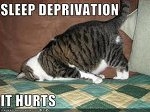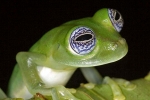Post
by HoseCrusher » Tue Mar 01, 2011 11:28 am
mars, the oxygen saturation data will pick up OBSTRUCTIVE events, but is much less sensitive to the other events. The pulse rate data is sensitive to all of the events, but it also has "normal" variations during the different stages of sleep.
There is also the problem of the people reading the data focusing on a single aspect of the study, that being the maximum desaturation value.
On one hand, if the data shows multiple desaturations down to something like 75 - 80%, it is pretty obvious that there is something not quite right. On the other hand if the desaturation is only down to 90%, that does not rule out sleep problems. You have to look further.
Global scoring calls for using a 4% drop in O2 to signal an event. In shallow stages of sleep your body can quickly be aroused to get the heart beating faster and limit the total desaturation, while still scoring a 4% drop. In deeper stages of sleep, the arousal is not as quick and the desaturations swing further to the point where they finally cross the 88 - 90% range. We should also look at pulse event scoring. If you set the criteria to a small fluctuation in hear rate over a short period of time, you will score a large number of events. This is useful for picking up on the things that cause small variations, but if it is set too sensitive you score an event every time you move or roll over. On the other hand setting the criteria to a larger fluctuation in rate over a longer period of time alerts you to more "significant" heart events.
Continuing on with scoring... I have a friend that is on xPAP and had eliminated desaturations below 90%, but was still not waking refreshed. The oximetry data showed that there were still some desaturations going on, and about 2/3 of the way through the desaturation the heart rate would increase. I adjusted the scoring to score an event with a 3% desaturation and we ended up with 75 - 100% desaturation events a night. I was amazed that by increasing the pressure by only 0.4 cm H2O, that the 3% desaturations dropped to 0 - 5 per night, and the heart rate settled down. Most importantly, my friend is now reporting more restful sleep.
I have another friend who was curious about his sleep and I loaned my oximeter out for an overnight "study." There was 1 desaturation down to 85%, but what was most interesting was that while not many "events" were scored, there was a gradual drop in O2 saturation several times during the night and each time the heart responded with an increased pulse. This brought the O2 levels back up and the process would continue. The gradual desaturation tool place over 60 - 90 seconds. I mentioned that sleep apnea can have somewhat of a similar pattern and it might be a good idea to talk to the doctor about having a sleep study done. Since there were no symptoms present, my friend went out and bought a brand new sports car and is using that for general treatment for all things... Since I was given the opportunity to drive it, we decided to do another oximetery study in a year and see how the two studies compare.
Oximetry is limited because it only records two channels of information. However, those two parameters are very important for restful sleep. A sleep study gives a more complete look at what is going on, but oximetry data, when carefully reviewed, can also give insights into more serious problems. Oximetry is not good for mild problems, or when arousal's during sleep are caused by something other than obstructions.
SpO2 96+% and holding...











